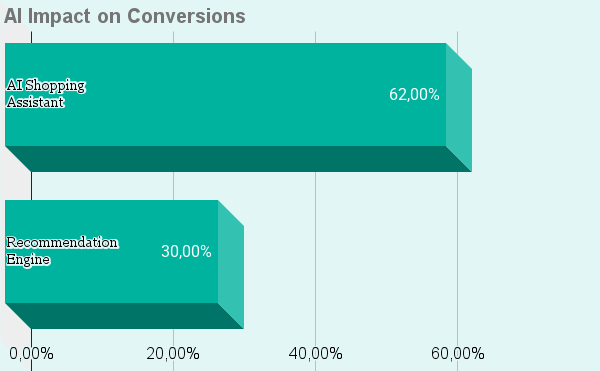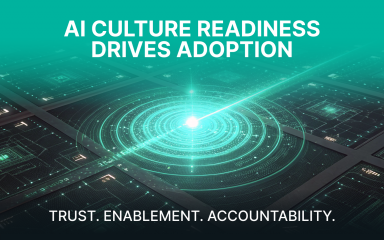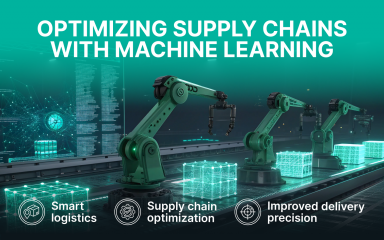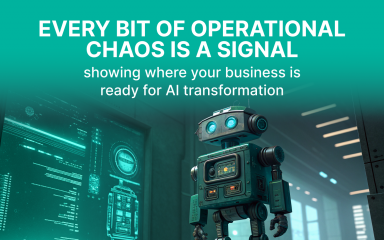Do your store need an AI shopping assistant or an AI product recommendation engine to drive more sales? Both tools promise personalized experiences, but they work in very different ways: one talks with your shoppers like a digital store clerk, the other quietly crunches numbers in the background. Knowing which to use (and when) can mean the difference between a “meh” browsing session and a cart full of items.
AI recommendations play a crucial role in enhancing the online shopping experience and improving customer experiences by delivering tailored product suggestions and increasing engagement.
Let’s break it down.
What Is an AI Shopping Assistant & Product Recommendation Engine?
At their core, both an AI shopping assistant and a product recommendation engine are ecommerce personalization tools. But here’s the key difference:
- An AI shopping assistant is interactive; it’s a conversational AI for eCommerce that chats with customers, understands needs, and guides decisions in real time.
- An AI product recommendation engine is more passive. It uses machine learning algorithms to suggest items based on browsing history, purchase data, or trends. A recommendation system relies on various recommendation algorithms such as collaborative filtering, content-based filtering, or hybrid approaches to generate personalized suggestions for users.
Think of it like this: the assistant is your friendly store associate, while the engine is the silent shelf tag that says “people who bought this also bought…”
Both improve customer satisfaction, help analyze user behavior, and support higher conversions. But the way they deliver those results is very different. Key features that set AI shopping assistants and recommendation engines apart include real-time interaction, advanced recommendation algorithms, seamless integration with ecommerce platforms, and the ability to personalize experiences at scale.
AI Shopping Assistant Functionality
An AI-powered shopping assistant isn’t just a fancy chatbot. It’s an AI eCommerce assistant designed to make personalized shopping experiences feel natural, quick, and human.
Conversational Support & Decision-Making
With conversational AI for eCommerce, shoppers can ask, “Which sneakers fit best for running in winter?” The assistant answers instantly, filtering through options faster than any static category page. That means fewer frustrated clicks and more confidence at checkout.
Personalized Styling & Product Matching
A personalized shopping assistant doesn’t just show “similar items.” It considers user preferences and personal preferences like style, budget, and past purchases. Instead of endless scrolling, shoppers get personalized recommendations that actually match their unique tastes.
Dynamic Behavioral Nudging
Unlike static recommendations, an AI-powered shopping assistant reacts in real time. Spend more time on a certain category? Add something to your cart but hesitate? The assistant nudges with relevant offers to boost customer engagement, improving customer engagement and average order value.
Cross-Platform Integration
A true AI eCommerce assistant follows shoppers everywhere: from your website to your mobile app to WhatsApp or Messenger. That’s modern shopping assistants at work: consistent, connected, and convenient.
Real-Time Data Processing
One of the strongest AI assistant shopping capabilities is its ability to process collected data on the fly. Robust data collection from diverse sources, such as customer interactions and transactional data, is essential for generating accurate and personalized recommendations. Prices change, stock shifts, and new products launch. The assistant adapts instantly, keeping recommendations fresh and relevant. Through data analysis, the assistant identifies trends and patterns in user behavior to improve the quality of its suggestions. Additionally, the assistant can process both structured and unstructured data, further enhancing the personalization of recommendations.
Product Recommendation Engine Functionality
A product recommendation engine is more behind-the-scenes. It doesn’t talk, but it’s very good at math. These engines are the backbone of ecommerce personalization tools, and they excel at scaling suggestions across massive catalogs.
Recommendation engines use data analytics to analyze customer behavior, preferences, and purchase history, allowing them to improve the accuracy of suggestions and boost customer engagement.
Collaborative Filtering
This is the classic “others also bought” approach. Collaborative filtering systems compare shoppers with similar behavior to suggest items. If thousands of people who bought headphones also bought cases, chances are you’ll see that case too.
Content-Based Filtering
Here the focus is on attributes. Like a blue jacket? Expect more jackets in blue, black, or similar cuts. Content-based filtering helps with personalized suggestions even when limited historical data exists.
Upselling & Cross-Selling Automation
A product recommendation engine is a master at increasing average order value. By suggesting accessories, bundles, or upgrades, it automates upselling without needing human intervention. Additionally, recommendation engines can deliver personalized promotions based on customer behavior, further increasing sales.
Scalable Product Suggestions
For retailers with huge inventories, recommendation systems shine. They can surface products shoppers might never find on their own, enhancing product discovery at scale, though without the interactive flair of AI assistants.
AI Systems and Business Growth
AI systems are rapidly transforming the landscape of online retail, becoming essential drivers of business growth and customer satisfaction. By harnessing the power of artificial intelligence, ecommerce businesses can deliver personalized shopping experiences that not only meet but exceed customer expectations.
One of the standout features of AI-powered recommendation systems is their ability to analyze vast amounts of customer data: everything from browsing history and previous purchases to real-time search queries. Using advanced machine learning algorithms, these systems identify patterns in user behavior and deliver personalized product suggestions that are highly relevant to each shopper. This level of personalization leads to higher customer engagement, increased average order value, and ultimately, greater customer retention.
Collaborative filtering systems and content-based filtering are at the heart of many recommendation engines. Collaborative filtering leverages the collective behavior of users to suggest products, while content-based filtering focuses on the attributes of items a customer has shown interest in. For ecommerce businesses dealing with limited historical data or new users, hybrid systems combine both approaches to provide more accurate and meaningful recommendations, ensuring no shopper is left behind.
AI shopping assistants, including virtual shopping assistants and voice assistants, take personalization a step further by offering real-time, conversational support. These AI assistants can guide customers through complex purchase decisions, answer questions, and provide tailored recommendations, all while collecting valuable customer feedback and sentiment. By integrating natural language processing, businesses can better understand customer preferences and sentiment, allowing for more effective personalized marketing campaigns and improved customer interactions.
AI-powered tools also empower marketing teams to identify patterns in customer behavior, enabling the creation of targeted promotions and personalized experiences that resonate with specific segments. This data-driven approach not only boosts customer engagement but also supports business growth by increasing the likelihood of conversion and driving higher average order values.
In the fast-paced world of online shopping, AI systems help ecommerce businesses stay ahead of market trends and adapt to changing customer behavior. Whether it’s through AI-powered search engines that streamline product discovery or recommendation engines that deliver spot-on suggestions, artificial intelligence is reshaping the customer journey from start to finish.
In summary, AI systems are more than just a technological upgrade; they are a strategic asset for ecommerce businesses aiming to enhance customer experience, foster loyalty, and achieve sustainable business growth. By leveraging machine learning models, natural language processing, and hybrid recommendation systems, companies can deliver the kind of personalized shopping experiences that today’s customers expect, setting the stage for long-term success in the digital marketplace.
AI Shopping Assistant vs. Recommendation Engine: Conversion Rate Impact
Numbers speak louder than promises. Here’s how both stack up:
| Feature | AI Shopping Assistant | AI Recommendation Engine |
| Functionality | Interactive, guides users, answers queries, proactive support | Automated suggestions based on data & behavior |
| User Engagement | Real-time chat, guided selling, proactive outreach | Passive, embedded in site/app |
| Personalization | Highly personalized, adapts in real time | Based on browsing & purchase history |
| Customer Journey | Shortens purchase path, assists with abandonment, upsells | Influences via product lists, less help with hesitation |
Conversion Rate Comparisons:
- AI shopping assistants: Up to 62% uplift in conversion rate when integrated effectively. Case studies show 9% higher conversions than other site features, often with a jump in average order value.
- AI recommendation engines: Typically deliver 20–30% increases, with advanced setups driving up to 25% more conversions. Amazon, Netflix, and Sephora have proven how well AI powered recommendation engines scale.
Why results differ?
- Shopping assistants provide conversational, proactive support, tackling cart abandonment and hesitation in real time.
- Recommendation engines excel at scalable exposure and upselling, but don’t directly resolve decision-making struggles.
Real-world examples:
- Gorgias AI Assistant: 62% uplift in conversions for Shopify brands.
- SuperAGI Recommendation Engine: 25–30% conversion rate lift; returning shoppers spent 25% more.
- Sephora AI Assistant: 30% more engagement and 11% conversion lift with virtual try-ons.
- North Face Guided Shopping: 60% higher click-through rates from AI-powered experiences.
Bottom line: if you want to address hesitations, reduce cart abandonment, and guide customers actively, assistants win. If you want scalable, passive lifts for huge catalogs, engines shine.
AI Shopping Assistant vs. Recommendation Engine: Key Differences

Here’s the face-off in plain words:
- Interactive vs. Passive Experience
- AI shopping assistant = real-time guidance
- Recommendation engine = background suggestions
- Real-Time Help vs. Static Suggestions
- AI reacts instantly
- Engines update periodically
- Two-Way Conversation vs. One-Way Offers
- AI = conversation
- Engine = list
- Behavioral Nudging vs. Algorithmic Matching
- AI = nudges shoppers through hesitation
- Engine = matches based on data patterns
When to Use What: Best Use Cases
Both tools have their sweet spots. The smart move is knowing when to pick one or combine them. Users interact with AI shopping assistants and recommendation engines in different ways, such as searching, clicking, or making purchases, which helps tailor the experience to individual needs.
Collecting user feedback through surveys and other channels is essential for refining and improving both AI shopping assistants and recommendation engines to better meet customer expectations.
Recommendation Engine for Large Catalogs & Repeat Buyers
Perfect if you’ve got tons of SKUs and rich historical data. A product recommendation engine thrives with customer data and repeat visitors, offering efficient personalized marketing campaigns.
AI Shopping Assistant for New Customers & Complex Choices
When shoppers are new, hesitant, or making high-stakes purchases (like furniture or electronics), an AI shopping assistant reduces friction and supports better decisions. It bridges customer expectations with personalized experiences.
Combining Both for Superior Personalization
Here’s the winning play: let the AI shopping assistant pull insights from the AI powered recommendation engine. Together, they deliver personalized shopping experiences that boost conversions, retention, and loyalty.
Future-Proofing: AI Shopping Assistants as the Next-Gen Tool
While recommendation engines aren’t going away, AI-powered shopping assistants are quickly becoming the stars of conversational commerce. Why? They feel human. They adapt instantly. They enhance customer experience in a way that feels natural, not algorithmic.
For ecommerce businesses, this means more than a higher average order value. It means customer retention, stronger customer sentiment, and ultimately business growth.
The future of AI shopping isn’t just silent recommendations. It’s digital conversations that convert.
Flexible AI Personalization FAQ
What is the difference between a recommendation engine and an AI shopping assistant?
A product recommendation engine suggests items based on browsing history or other shoppers’ actions. An AI shopping assistant interacts in real time, offering guidance like a store associate.
Do I need both tools to improve eCommerce conversion rate?
Often, yes. Engines work well with big catalogs, while assistants shine with customer interactions. Combined, they can maximize conversions.
Can AI shopping assistants reduce cart abandonment?
Yes. By addressing customer concerns, suggesting alternatives, or offering promotions at the right time, they drive higher customer satisfaction and reduce abandoned carts.
How does conversational AI improve customer experience?
By creating personalized experiences through natural dialogue. Shoppers feel understood, which leads to stronger customer loyalty and smoother customer journeys.
What’s Next?
If you’re serious about growth, don’t frame it as an AI shopping assistant vs. a recommendation engine. The real question is: how can both work together to enhance customer experience and maximize conversions?
Bintime helps retailers implement AI-powered tools that combine shopping assistants with AI recommendation engines, delivering personalization that actually works.
Request a personalized demo today and see how your brand can deliver personalized product suggestions that increase conversions and loyalty.











